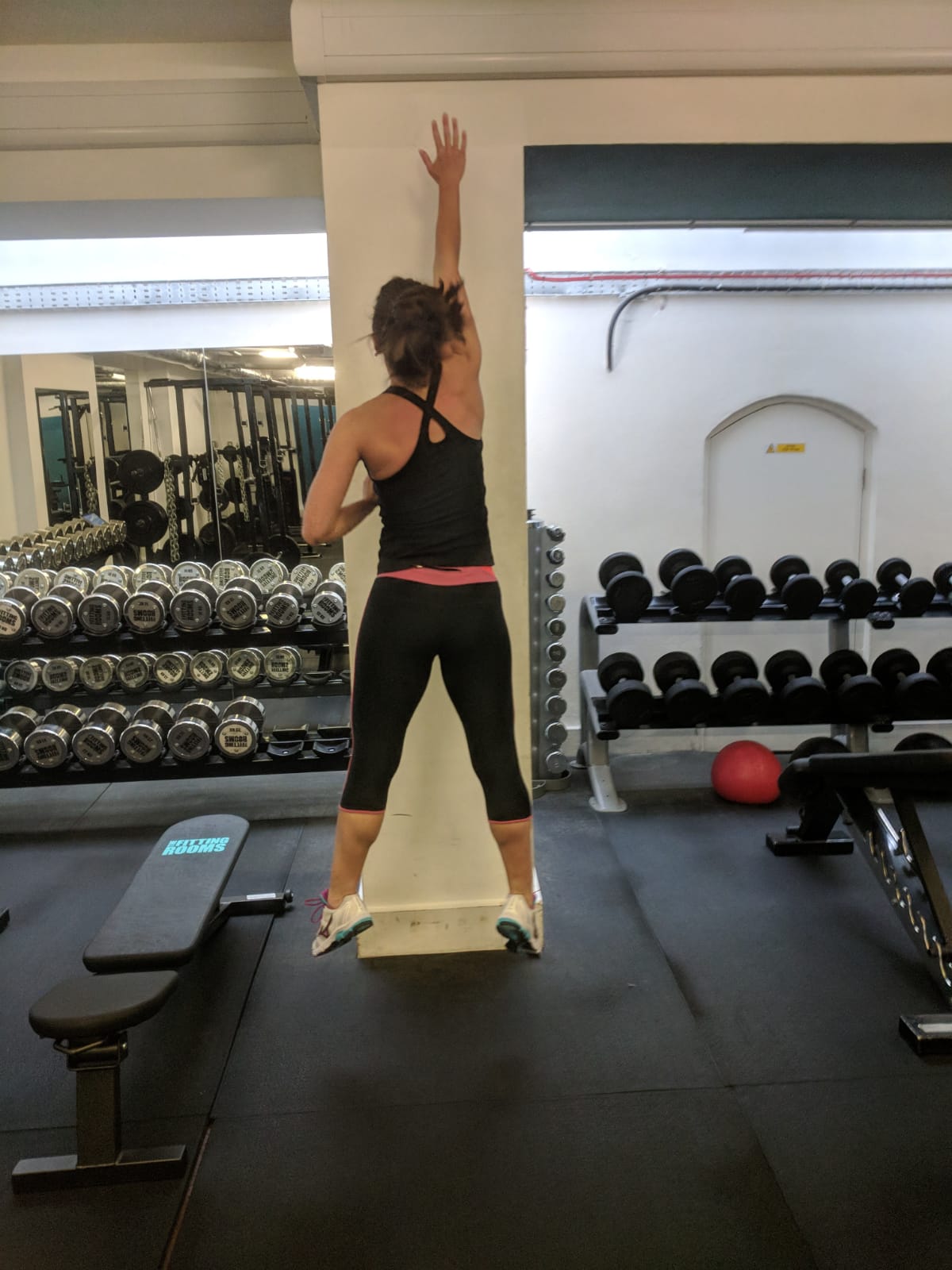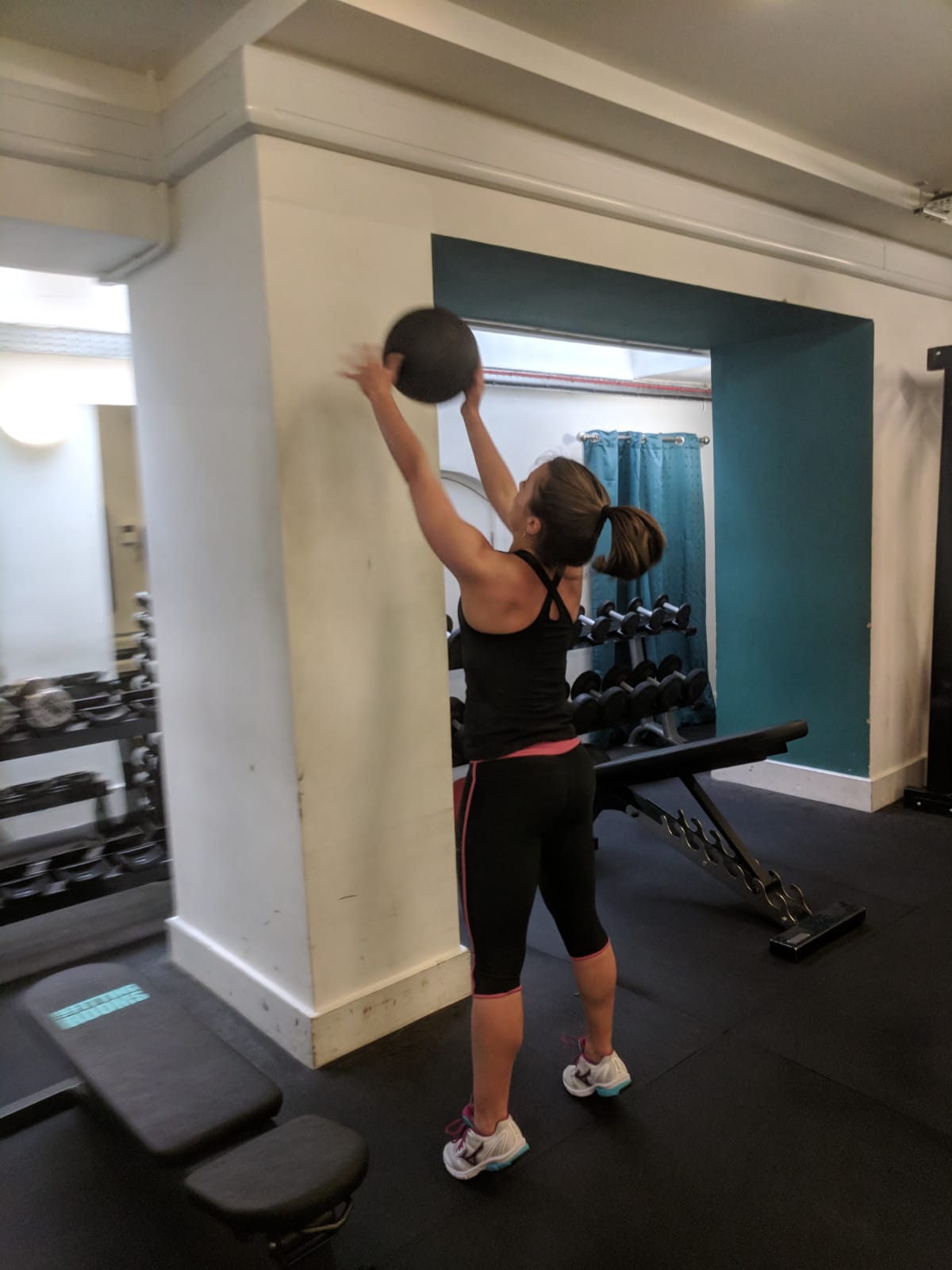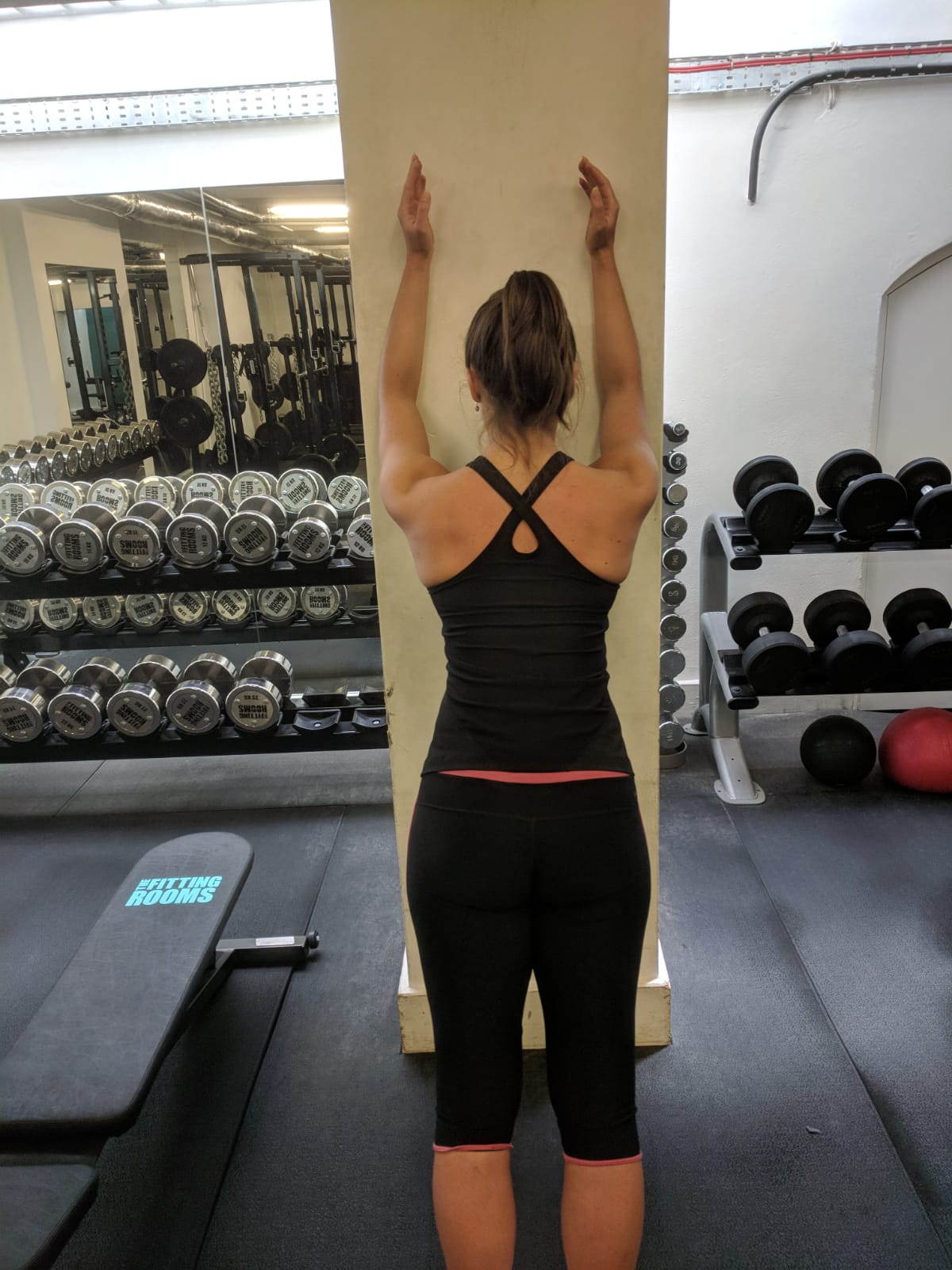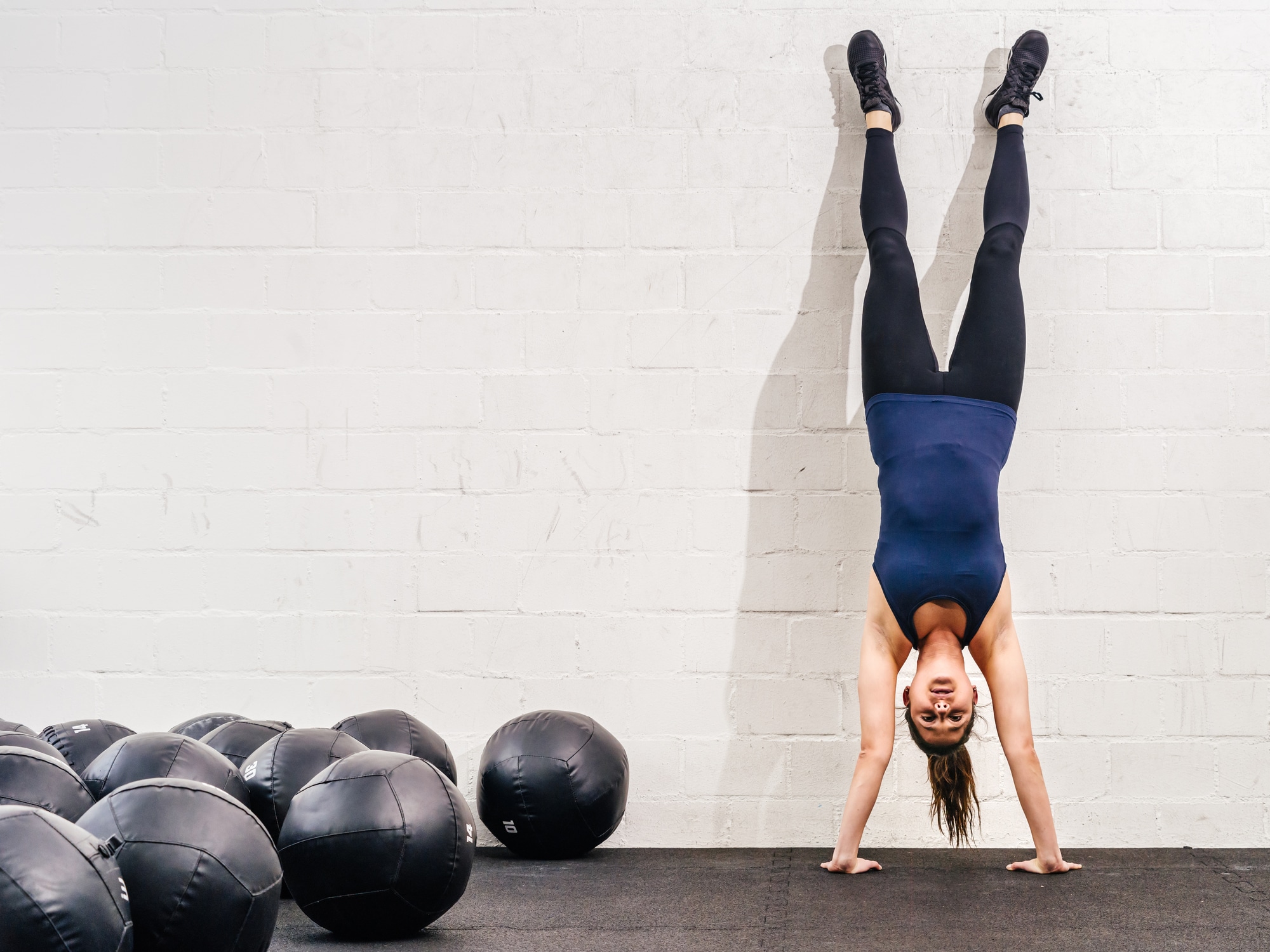When you see fitness bloggers talking about the latest fad workout, chances are you need to head to a fancy gym or invest in expensive equipment to get in on the craze.
Luckily, the exercise is accessible for all. Known as ‘vertical training’, all you really need for this one is a wall.
David Jordan, founder and PT at The Fitting Rooms, says: “Using a wall can bring a great bit of variation to your workout. This kind of training often requires the use of your own body weight, so can be particularly challenging, but a lot of them can be progressed or regressed to your ability level.”
Here are Jordan’s five favourite vertical training exercises to try out yourself…
1. Vertical jump

On the face of it, this one looks pretty easy – it’s just a jump, right? However, the more you practice it, the more you’ll realise it’s actually super challenging. Jordan calls it “a fantastic exercise to develop full body explosive strength.”
How it’s done: “Stand side on to a wall then quickly squat down and jump as high as you can. Set a marker on the wall to try and reach each time. A great way to test your vertical jump is to jump with a pencil in your hand and mark as high as you can on the wall, and next month try to beat it.”
2. Wall push ups

If you’re not confident doing a full push-up on the ground, you can build up strength by using the wall. It’s a good one to perfect, because it works your chest, shoulders, arms and core. Jordan says: “The wall push up allows great variation in the angle of which you push. It also allows you to vary the amount of your own body weight you are pushing, so it allows for more progression or regression in weight.”
How it’s done: “Lean your weight on the palms of your hands against the wall, keeping your body in a straight, plank-like position, then lower your body towards the wall in a push up action, and repeat.”
3. Wall handstand

Once you’ve practiced the first two exercises and built up a bit of strength, you can give the wall handstand a go. Jordan says: “Handstands are very underrated exercises for teaching overhead strength and stability, plus they look really cool.” The wall also acts as a stabiliser and is a good way to help you work your way up to an unaided handstand.
How it’s done: “Walk up to the wall and place your hands down about a foot away. Swing your legs up into a handstand, and allow it to slightly over-reach so that your feet rest on the wall. Hold for a set period of time, or if you’re very advanced, lower in and out of some handstand push ups.”
4. Wall ball

This is the only exercise that requires equipment, but you’ll be able to find a medicine ball and a handy bit of wall at any gym. Like so many vertical training exercises, it’s total body, and really puts your core, legs, upper body and hand-eye coordination to the test.
How it’s done: “Hold a medicine ball at chest height facing the wall. Squat down and as you come up, throw the ball up and against the wall. Catch the ball as it comes off the wall, drop back into the squat position and repeat.”
5. Serratus wall slides

This one might sound daunting and is a bit technical, but is easy once you know what you’re doing, and will do much to improve shoulder health and prevent injury. Jordan says: “The serratus wall slide teaches the scapula [shoulder blades] to move correctly. From a sporting perspective this will improve punching and throwing power, and from a general gym goer’s perspective, will improve pressing movements and avoid shoulder injury.”
How it’s done: “Lean against the wall on your forearms with something that will slide between you and the wall (a soft towel will work). It should look like you are holding a plank against the wall. Push your thoracic [upper back] away creating a natural arch in your back and at the same time slide your forearms up the wall. From behind, you should be able to see your shoulder blades move around your body and up towards your armpits.”
